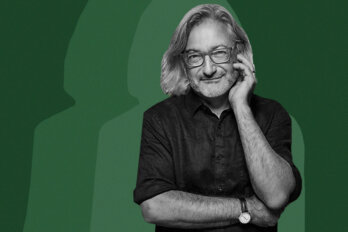The late Richard O’Hagan worked as a journalist (writing for Maclean’s and the Toronto Telegram), as an adviser to two Canadian prime ministers, and as a long-time member of The Walrus Foundation’s board of directors. In 2016, with the support of his family, The Walrus launched The O’Hagan Essay on Public Affairs, an annual feature article that explores an aspect of public policy. Through my conversations with O’Hagan, who was almost ninety when we met, I came to see his profound belief in journalism’s power to shape our day-to-day lives. He died in 2018, but the annual tradition lives on.
The O’Hagan essay is not aimed at policy wonks or bureaucrats. Its job is to take a complicated question and make it relevant to everyone. Over the past five years, the series has explored subjects as wide-ranging as free trade, bilingualism, and the carbon tax. In each case, the story’s author was tasked with demystifying the relationship between the decisions being made in boardrooms and government backrooms and their implications for the rest of us. This describes the general function of all journalism, of course, but when it comes to broad issues that defy straightforward solutions, the reporter’s role is heightened.
This year’s essay, on the future of the media, is close to home. By all measures, traditional media is in decline: according to 2017 research by the Public Policy Forum, it has shrunk by more than half over the last decade, and recent reports demonstrate that the pandemic has accelerated the closure of local media outlets across Canada. I wrote this year’s O’Hagan essay after realizing that, as a registered charity that produces journalism and events, The Walrus has a front-row seat to the industry’s big-picture problems. The story was inspired by countless conversations, meetings, and public events held over the last few years between institutions, journalists, government officials, and even platforms like Facebook and Google, whose growth has transformed the way we share and consume news. The feature, “Tomorrow’s News,” attempts to capture something about this moment for an industry at a crossroads—a time when technological, financial, and social disruption is sinking old business models before new ones can fully emerge.
Journalism, unlike many industries, defies the axiom that, if you build a great product, the money will follow. It feels like time to explain why. It’s an ongoing surprise that The Walrus, now in its nineteenth year, is a veteran in a constantly evolving media climate. It has taken time, leadership, and a fair bit of luck to develop it into an established brand. Today, we have achieved stability by diversifying revenue streams: philanthropy, partnerships and sponsorships, and The Walrus Lab (an in-house agency that creates content and events for other organizations), in addition to traditional circulation and advertising revenue. As of fall 2021, online readers can also become occasional or monthly supporters. Those regular contributions will help keep our website accessible to everyone.
Even with the right business model, it’s not enough to produce journalism that is smart or addresses important topics—it also needs to speak to readers. In this issue, there are a number of what we’d call classic “Walrus” stories. Sarah Barmak’s latest health feature, “What Women (Still) Want,” could be seen as a report on why there is still no viable female counterpart to Viagra. Her reporting, however, paints a much bigger picture about the way women’s sexualities are misunderstood and, therefore, often overlooked. In “Shooting Stars,” photographer Lou D, who has had a backstage view of countless rock concerts, takes editorial fellow Connor Garel through his film archive—never before made public—to reveal our changing relationship to celebrity photography. What does a single 35mm print, lost to time, mean in an age when stars can create and control their own public images on social media?
And, in a moving memoir, seasoned journalist and editor Stephen Trumper uses his storytelling skills to chart the arc of his life’s true love. In “The Love Letter,” Trumper candidly describes the challenges he and his wife have faced over their decades-long marriage, such as her Alzheimer’s diagnosis and his difficulties visiting her in long-term care during COVID-19. His drive to learn from his experience is reflected in every sentence. It’s a reminder that we are better at navigating change the more we understand it.





